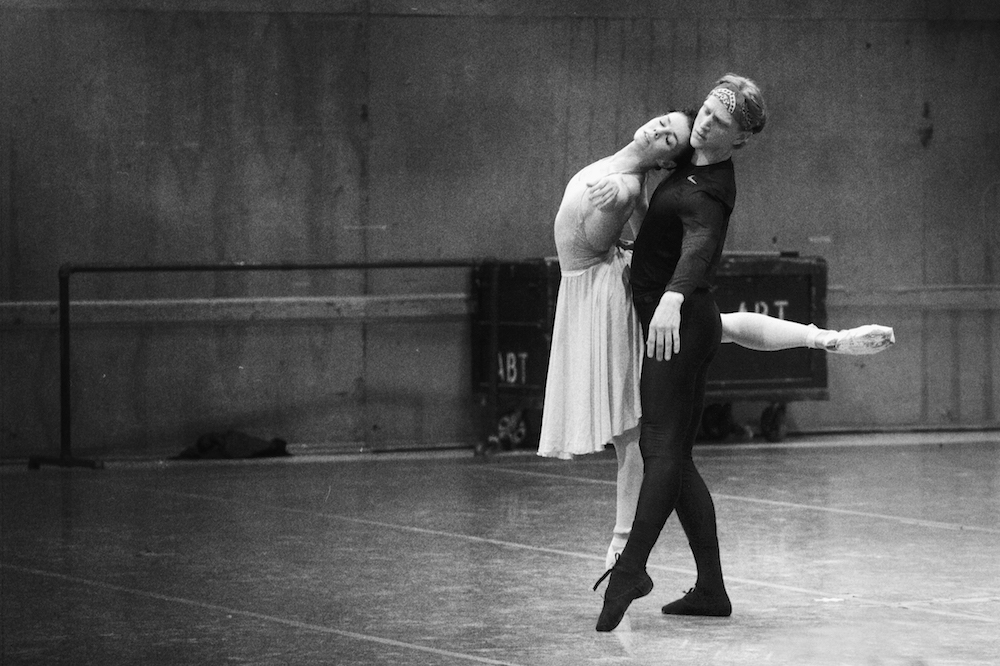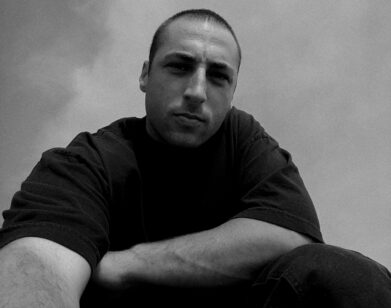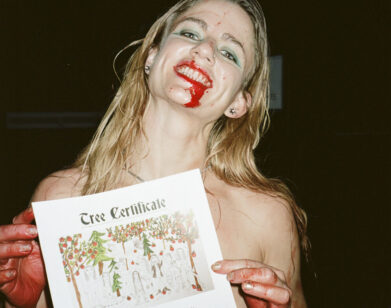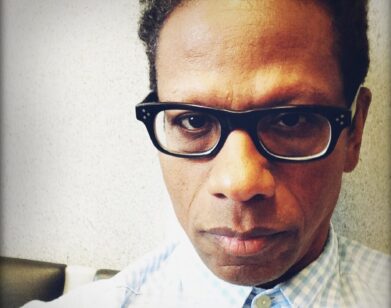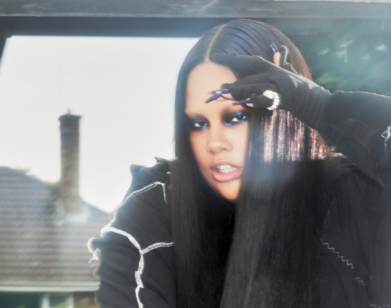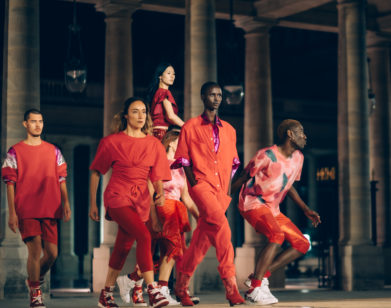Ballet dancers Natalia Osipova and David Hallberg on their enduring stage partnership
A look here, port de bras there, the timing is off as they prepare to jeté in unison, they need to start again, just a few beats back.
David Hallberg, 36, and Natalia Osipova, 32, are in the studio running the famous bench scene in Giselle over and over with ballet mistress Irina Kolpakova—their only rehearsal before dancing lead roles in the American Ballet Theatre production, which they’re dancing together tonight only.
The exhaustion is palpable as they pause between reps, breathless and sweaty, but they choose to laugh during hiccups, teasing each other before hitting the choreography full throttle, no residue from the minute prior. Between her limited English and his little bit of Russian, they find a common language in dance and musical cues, his mischievous Albrecht, her trusting Giselle. Two principal dancers making magic in a ballet about heartbreak, and forgiveness.
Their first-ever partnership in a 2009 performance of Giselle was a lucky accident. Osipova was dancing as a guest artist with ABT and her intended partner was injured ahead of the show. Hallberg subbed in. Everything that follows reads like a storybook romance.
The pair subsequently worked together for productions of The Firebird, Romeo and Juliet, and The Sleeping Beauty, before being torn apart by distance and injury. It’s dramatic, but as Osipova tells it a beautiful ballet partnership is comparable to love at first sight. And tonight, the “lovers” reunite on the Met stage, where it all began.
JANE GAYDUK: David, it’s been a difficult few years for you, recovering from a long injury, and then getting injured again on stage. What are the emotional and physical challenges of rehabilitation?
DAVID HALLBERG: I think that the most important is that when I was injured, I really missed dancing with Natasha. It was like for these two and a half years, the goal was to dance with her again. The rehabilitation was arduous. I mean it was really difficult. It was really taxing. So much went wrong in the rehab, but then when I went down to Australia [to work with Australia Ballet’s premier medical department], everything kind of came together finally and I have to say one of the goals that I had was to dance with Natasha again.
GAYDUK: Natalia, have you had comparable moments in your career?
NATALIA OSIPOVA: I haven’t had any serious injuries where I was out for like a year, or half a year. I’ve had smaller injuries. I had a hip injury where my hip was popping out of its socket all the time and it turns out I tore the cartilage, and they told me I couldn’t dance anymore and that I had to get surgery because it would continue to dislocate. I was eventually able to treat it, but I had a situation where I thought I would never be able to dance again and I was very depressed. It was very difficult. I just couldn’t believe it was true. So I forced myself into treatment, doing everything possible, and was able to return to work pretty quickly.
And of course, I was very sad at the time that David and I weren’t able to dance together. We moved to different countries for a while and when we were finally about to start performing together again, David got injured.
GAYDUK: Did you have the surgery?
OSIPOVA: No, I decided I would be able to deal with it myself. And with the help of a great physical therapist I was able to properly strengthen all the muscles surrounding the injury. I listened to myself, I knew I didn’t want the surgery. Thank goodness everything came together and I was able to work again.
HALLBERG: For me there are two things that I look back on during that time that I was not dancing. One is that in fact, I didn’t need to have surgery. I had the surgery because people told me that I needed it, but I really believe that I didn’t need to have an operation, that I could have rehabbed it like Natalia did. I think surgery—
OSIPOVA: I think you did the wrong thing.
HALLBERG: Yeah. I think it was the wrong decision to do this operation.
OSIPOVA: I agree.
HALLBERG: And that’s why it took so long and when I look back at this time, it could have lasted eight months, not two and a half years. The other thing I look back on is the time I lost with the greatest partner of my career. We had had these performances on stage together and these experiences, but we lost two and a half years of life together and this is why I don’t look back anymore. I don’t do this very often. Because of this nightmare that I went through, we lost so much to time to be able to live together as a partnership and now that I’m back and now that we’re making plans for the future, it’s like I don’t want to look in the past anymore. I want to look to the future. I want to look at the experiences we can share together while we can still dance.
GAYDUK: What makes a good partnership work?
OSIPOVA: I’m first! David speaks too much! [both laugh] In truth, everyone always says that the physical proportions of the partners need to be ideal, and this and that and they need to understand each other well. But the longer I dance, the more I think that it’s all bullshit, it’s not true. You can be totally different. I’ve had partners where we are completely different—we don’t look like each other, we don’t overlap in temperament, or anything else. What has to work in a partnership is inexplicable, it’s the magic that happens between people, this magical connection and if it’s not there you can’t fake it. You could look good together, but it’s not there. It needs to be two people of the same blood, of the same heart. You make eye contact once and it happens automatically. Nothing will come of it if you just think about how tall he is or if he holds you well. I’ve had a long career and [this partnership] happened unexpectedly, and I understood that this person feels the way I do.
HALLBERG: I think at the beginning of my career, I was put with people who would physically look good with me and listen, Natasha and I are completely different physically. No one would ever think that we would dance together, and we weren’t planned to dance together. [Osipova laughs]
I was filling in for a dancer who was injured. When we did our first Giselle, to me it was like an explosion. The experience was so electric. She brought out of me as an artist what I didn’t know existed and I didn’t have a choice but to go with her. She’s such a powerful energy. She’s such a powerful artist that she doesn’t give much choice with the people she’s with. You have to go with her, because she’s possessed almost. That’s what was so exciting. There was this person who was so different from me, but brought out who I didn’t know that I was. Past that Giselle, it just became deeper and deeper and more meaningful and I don’t know some of this is left for just Natasha and I [both laugh].
Honestly, a good partnership isn’t physicality. People have said in the past, “Oh you look good” and it was boring. Like with other partners and with people who physically look good with me. It’s about this magic.
OSIPOVA: Oh David. You can never know about a partnership.
HALLBERG: You can never plan it, you know.
GAYDUK: How many times have you guys done Giselle together?
OSIPOVA: Maybe two or three times, yes?
HALLBERG: Yeah.
OSIPOVA: Twice in New York, maybe Chicago and then Bolshoi. Five times.
GAYDUK: How does it change each time you perform it?
OSIPOVA: It’s different every time and it depends on your mood, how you’re looking at life. Every time we dance it, we never repeat it because this ballet is very natural. You have nothing to do in this ballet if you’re not worried and you’re not really feeling it. It’s dramatic, real, and lively. You have a different personal story every time. Giselle is the most beautiful narrative in ballet, for me personally.
HALLBERG: I remember the first time we did Giselle, the first time we did Romeo and Juliet. And then we went into our second performance of each ballet and I thought to myself, “We can’t recreate what we did the first time. We have to experience it like we’re doing it completely new.” Sometimes when the audience responds well, when you feel good, you want to repeat it. You want to do that same thing again. But I think what’s so important is that even though we’re doing Giselle, a ballet we’ve done many times, together and many times with other partners, you have to keep it in the moment. You have experience it freshly as opposed to trying to recreate what felt good.
GAYDUK: And what is the difference for you guys between dancing in Russia and dancing in England or America?
OSIPOVA: Russia has always been my home, it’s the place where I was born and grew up, but I never change the caliber of my performance, regardless of where I am. The goal of the performance is always the same, but depending on which country you’re dancing in, the choreography is different. I always try to adapt to the style of the ballet I’m dancing, I try to match the style and technique of the company with which I am dancing. The feeling doesn’t change for me. It’s a performance, it’s an audience, I’m not thinking about the nationalities.
HALLBERG: It’s not so important where we dance these ballets, what’s more important is that we dance these ballets together. I think doing them at ABT, doing them at Royal Ballet, doing them at Bolshoi—of course these are the greatest companies in the world, it’s an honor to do them, but what’s important is that we do them together. And then I think the greatest experience I had was the fact that when we were dancing together, there weren’t thousands of people watching. It was just her and I and nothing else was really happening around us. I’m very aware of myself performing sometimes and I think, with her, I become unaware of performing and I really in essence, just live.
GAYDUK: What are some of the joys of ballet that people might not be aware of?
HALLBERG: I think one of the most important things is that we tell human stories. Giselle and Albrecht, you know, they are two people who fall in love with each other and circumstantially, it doesn’t work out. There are major complications and I think that in itself is human emotion. It’s human conflict. It’s human life. I think whether it’s a joy or whether it’s a tragedy, it’s something that everyone goes through. Love, heartbreak, death, despair.
OSIPOVA: Dancing is movement without words that tells a story and conveys emotion. Ballet is a fine art, it’s a difficult art, and of course it’s beautiful, but that beauty is put forth with the entire heart. When you dance it can be a real form of catharsis….and incredible artists and choreographers and dancers allow people to experience life differently. In general, it’s also a huge joy for me to watch people moving on the streets, in clubs, when they’re young. People get a lot of joy when they dance. What is fine art, is fine art.
HALLBERG: I think that dance is primal. Dance, whether its ballet or tap or anything or what you do at the club, is primal in a way everyone can relate to it whether it’s classical music or techno. Dance comes from within everybody. For us, it’s ballet. For our form of expression of movement, it’s ballet. That doesn’t discredit any other form of movement. Everyone can connect.
GAYDUK: What do you guys see for yourselves in the future?
OSIPOVA: Everyone always says you have to plan but I don’t really like to make plans. I don’t like to think too far into the future. Every time I’ve tried to have a plan for my life, it evolves into a decision I later make in one second. I don’t know how long I’ll continue dancing, I hope it’s a long time. I have a lot of my own projects and I’d like to keep dancing in different styles, with different companies. But after that, I have a lot of ideas for what I could do. I want to get an education and learn a different profession, maybe related to the arts, but it’s also very important for me to start a family. I don’t have one and it’s something I really want.
HALLBERG: I’ve tried to have a plan as well. I think a strict plan usually leads to disappointment. When I haven’t had a plan, life has really shown me its plan for me. Case in point: my partnership with Natasha, or me going to Bolshoi Theater, and the last show at Royal Ballet, when I got injured on stage. The plan for me was to reunite with Natasha and it’s almost as if I wanted it so badly, it wasn’t the right time. When the right time comes, it will be the right time. Going forward, first off, I want to be injury free. Second off, I want to dance as much as I can for as long as I can, because when it’s over, it’s over. I’ve got so much to share when I finish dancing. I want to go into Arts leadership, like direct a company or something like that. I really feel like I have a lot to share with dancers, with the artistic community. But for now, I’m really focused on dancing exactly what I want to dance, because you do feel the ticking of time. At least I do.
GAYDUK: If you guys have anything else you want to talk about you’re welcome to do that.
OSIPOVA: I think we’ll say it on stage, together.
HALLBERG: Exactly.
AMERICAN BALLET THEATRE’S GISELLE RUNS THROUGH MAY 19, 2018.

